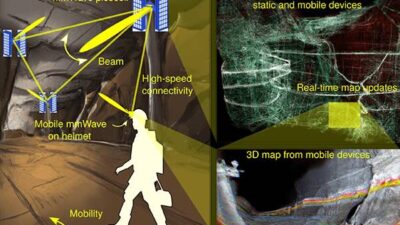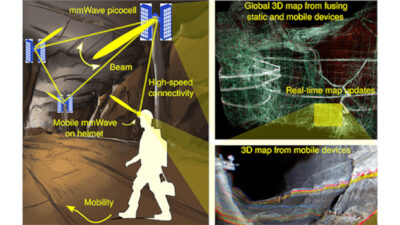Industry trends impacting the machine vision industry include embedded vision growth, deep learning technology, and global economic uncertainty.
“Slow and steady wins the race” is a phrase that will define the machine vision industry in 2019. Economic uncertainty will impact the industry, but not to a damaging degree. Hardware platforms such as embedded vision, accompanied by deep learning software, are expected to flourish. Traditional applications found on the factory floor will also remain strong. Four trends in particular will influence the vision industry in 2019.
1. Embedded vision will continue to grow
Embedded vision will continue to proliferate in 2019 because of the applications it supports in countless markets and industries. Examples include autonomous driving, life sciences, consumer electronics, border surveillance, distribution, and agriculture.
“Processing power has increased tremendously, and memory has become very inexpensive,” said John Merva, vice president, North America, Gardasoft LLC. “Users have the ability to choose a very small camera and utilize data from the cloud from many different sources. When you combine these factors with machine learning into a single package, you’ve got embedded vision.”
Customers are looking toward system integrators to develop the entire embedded vision system. “Embedded vision is taking smart cameras toward their original intention, which was to get image processing video analytics within a very small enclosure and as close to the image sensor as possible,” said Dr. Rex Lee, president of Pyramid Imaging. “To address the embedded vision market, we’ve developed expertise from camera design to FPGA programming so that application-specific solutions can be quickly provided in a low-cost, low-powered platform that can incorporate AI and deep learning capabilities.”
Designing a system that is attractive to customers is the biggest challenge for embedded vision. “Being able to put all the functionality that customers in the machine vision landscape have historically come to know and understand into a very small form factor with a low-cost, low-power device is a significant R&D challenge,” said Alex Shikany, vice president of AIA. “Educating a consumer on a drastically different hardware solution isn’t always the easiest thing, but the ultimate hope is that customers will respond in kind to a product that’s more user-friendly, smaller, and ultimately lower cost.”
Traditional machine vision is not be able to compete with embedded vision in many use cases. However, it is undergoing a revolution in its own right. “Machine vision data isn’t sitting in its own silos anymore,” said Steve Wardell, director of imaging at ATS Automation. “Fully automated systems that include machine vision have a lot of sensors and motion components that allow us to collect data to get a better sense of operational effectiveness of the equipment within the systems.”
2. Deep learning amplifies
Deep learning in machine vision has been on the cusp of becoming a major disruptive technology. 2019 may be the year it is mature and ready for broader deployment. “If you are plugged into the machine vision industry, you have probably seen demos of how the software stacks with deep learning algorithms and how it can drastically and quickly produce fantastic results,” Shikany said. “These systems can run thousands upon thousands of permutations and approach 100% accuracy in identification and other applications historical to machine vision.”
Keith Reuben, president, Teledyne Imaging, Vision Group, said deep learning will have a profound impact on traditional image analysis methods. “It will not only change the products we produce but also the way we interact with our customers.”
Deep learning will play an important role in solving applications that traditional machine vision cannot. Wardell used vaccine inspection as an example. “We inspect vaccines in vials that are freeze-dried, and the results are quite different every time, depending on how they dry,” Wardell said. “It becomes very challenging to do a classical inspection process, because what might be a particle in one instance could look very similar to a crack.” Deep learning helps distinguish between the variances.
3. Seeing the unseen
While deep learning may be the newest way to gather information from an image, it isn’t the only technique. Advances in InGaAs shortwave infrared (SWIR) cameras and lighting have improved nonvisible imaging’s effectiveness. “In these higher wavelengths, you can do things like see through a piece of composite airline wing to find internal defects,” said James Gardiner, business development manager with Metaphase Technologies, Inc. “We are now bringing high-power SWIR LEDs to the market for high-speed machine vision applications.”
Gardiner also sees growing demand for hyperspectral imaging. “When you are looking at hundreds of spectral slivers in a large range to detect subtle differences on an object, you need a broadband light source,” he said. “This will allow us to use significantly fewer LEDs and create a broadband light source that mimics halogen,” Gardiner added.
4. Economic uncertainty is likely
While the U.S. economy looks strong heading into 2019, there are signs of a potential slowdown. The Dow Jones Industrial Average continues to sweep downward, and business investment has slowed. “The stock market is reflecting people’s belief that there is a recession ahead, not only in the U.S. economy but the world economy,” Dr. Lee said. “Investors who drive business decisions are going to pause and be concerned about what is ahead, because business owners are risk-averse. Some of our customers are concerned that they’re already starting to see a slowdown in their customers’ purchase decisions. There is a great deal of uncertainty happening in the marketplace and geopolitical space, and that tells me that 2019 will likely start to flatten.”
The biggest economic threat could be tensions related to trades and tariffs, which have many companies moving cautiously into the new year. “The largest world economies, which also happen to be the largest markets for machine vision products, are currently having trade issues,” Reuben said, calling this the “single biggest threat to growth of our industry, which has had a great run so far in this decade.”
Economic uncertainties have prompted machine vision insiders to predict steady but smaller growth, particularly compared with the last two years. “Although 2018 saw a very hot start for machine vision in North America, we have plateaued within the last six months,” Shikany said. “I anticipate the industry finishing at a record level in 2018, but only by about 3% to 5%. I don’t see the double-digit growth we experienced in 2017 and the beginning of 2018 returning in 2019, based on the fact that neighboring industries, like robotics, have significantly experienced a slowdown this year, namely in the automotive space. But similar to 2018, I do see a growth range of 3 to 5% for 2019.”
While the tide for vision and imaging is slowing in North America, the Chinese market is on the rise. “There is a huge demand for robotics and automation in China, and the country has many domestic competitors in the space such as Hikvision and Dahua Technology,” according to Shikany. “Many AIA members are paying close attention to developments in the Chinese market because they have operations there.”
Despite a potential slowdown, machine vision will stand strong, just as it always has. “Embedded vision and deep learning are at the center of autonomous systems, such as autonomous vehicles and UAVs,” Shikany said. “And we know they are at the center of factory operations. From a vision perspective, we are in a very good place.”
Winn Hardin is contributing editor for AIA. This article originally appeared in Vision Online. AIA is a part of the Association for Advancing Automation (A3), a CFE Media content partner. Edited by Chris Vavra, production editor, CFE Media, [email protected].



